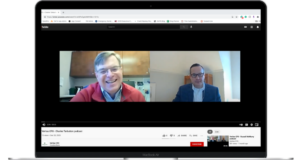‘HOW’S MY TRUCKING COMPANY DOING?’
Recently, I’ve had more trucking company owners ask me how I think their business is performing. My answer is always: “Let me take a look at your financials and I will tell you.” The reason I review their financial statements is to calculate key financial ratios and KPIs (key performance indicators) so I can compare their company’s ratios to other companies’ KPIs and to industry standards.
The first financial statement to review is the Profit and Loss (P&L) statement, and the first metrics to look at are EBITDA (Earnings Before Interest Taxes Depreciation and Amortization) and EBITDA percent (EBITDA as a percent of sales). EBITDA is a standard financial metric and an easy one to compare with other companies. EBITDA measures a company’s profitability excluding accounting impacts of depreciation and amortization and financing impacts of interest and taxes. EBITDA can also be used as a high-level estimate of cash flow. Trucking companies also measure EBITDAR, which is EBITDA plus equipment rental. EBITDAR normalizes operating income based on a company’s method of financing equipment such as purchasing or leasing tractors and trailers.
Other metrics to measure based on the P&L are a company’s operating ratio (OR) and operating costs per mile. Operating ratio measures a company’s operating expenses as a percent of its operating revenue. A well-performing trucking company will have an OR in the upper 80 percent to lower 90 percent range. A great tool for comparing operating costs per mile is ATRI’s “An Analysis of the Operating Costs of Trucking” that reports the major operating costs on a per mile basis. Some of the operating costs included in the report are fuel costs, insurance premiums, truck and trailer payments and driver wages and benefits.
Other KPIs derived from the P&L include base revenue per loaded mile, base revenue per tractor per week and percent of deadhead miles. As a member of the American Trucking Associations’ National Accounting and Finance Council, we have access to valuable information and resources in the trucking industry to use in our profitability assessments.
Other ‘soft’ costs that should be taken into account when analyzing a company’s performance include insurance and risk management costs, especially considering the rise of nuclear verdicts. Another type of soft cost is that of driver recruiting and retention. With a shortage of qualified drivers and the difficulty in retaining these drivers, a trucking company owner can spend a significant amount of time and effort on this part of the business. Although these soft costs are difficult to quantify, they can have a significant impact on the business.
A better measurement to review is cash flow, especially cash flow from operations, which is reported on the second financial statement, the cash flow statement. It shows how well a company is managing its cash to fund its operations and to pay its debt obligations. The company should be generating positive cash flow from operations, which shows that it is properly managing its cash. In contrast to measuring EBITDA on the P&L, a company can be profitable, but not manage its cash well and struggle to stay afloat. The cash flow statement also shows cash generated or used from purchasing or selling equipment and cash borrowed or repaid to lenders and owners as dividends.
My favorite metric is Return on Total Capital (ROTC), which is calculated from the P&L and the third financial statement, the balance sheet. ROTC takes into account the results of the company’s P&L and its balance sheet and capital structure, including debt and equity. ROTC is calculated by dividing the company’s profitability by the sum of its debt and equity capital. The investment banking firm Stifel publishes an excellent transportation and logistics industry update that reports ROTC and other financial metrics for trucking companies and can be used for comparison purposes.
By reviewing their financial statements and comparing these metrics with other companies’ and industry standards, trucking company owners can tell how their trucking company is performing. Is your company generating more than 10 percent ROTC? If not, or you need help calculating your ROTC, reach out to a finance professional for help. Your company depends
on it.
Matt Clark helps transportation and logistics companies that need the expertise of a chief financial officer on an interim or part-time basis. He can be reached at [email protected], 404-931-7166 or www.veritascfo.com.




